The document discusses the psychological effects of violent video games on children. It describes several studies that found negative effects such as increased aggressive behavior, decreased empathy, and increased physiological arousal from playing violent video games. However, it also notes that some research has found no causal link and that correlations may be better explained by other factors like preexisting aggression. The document presents arguments on both sides of the issue without taking a clear stance.
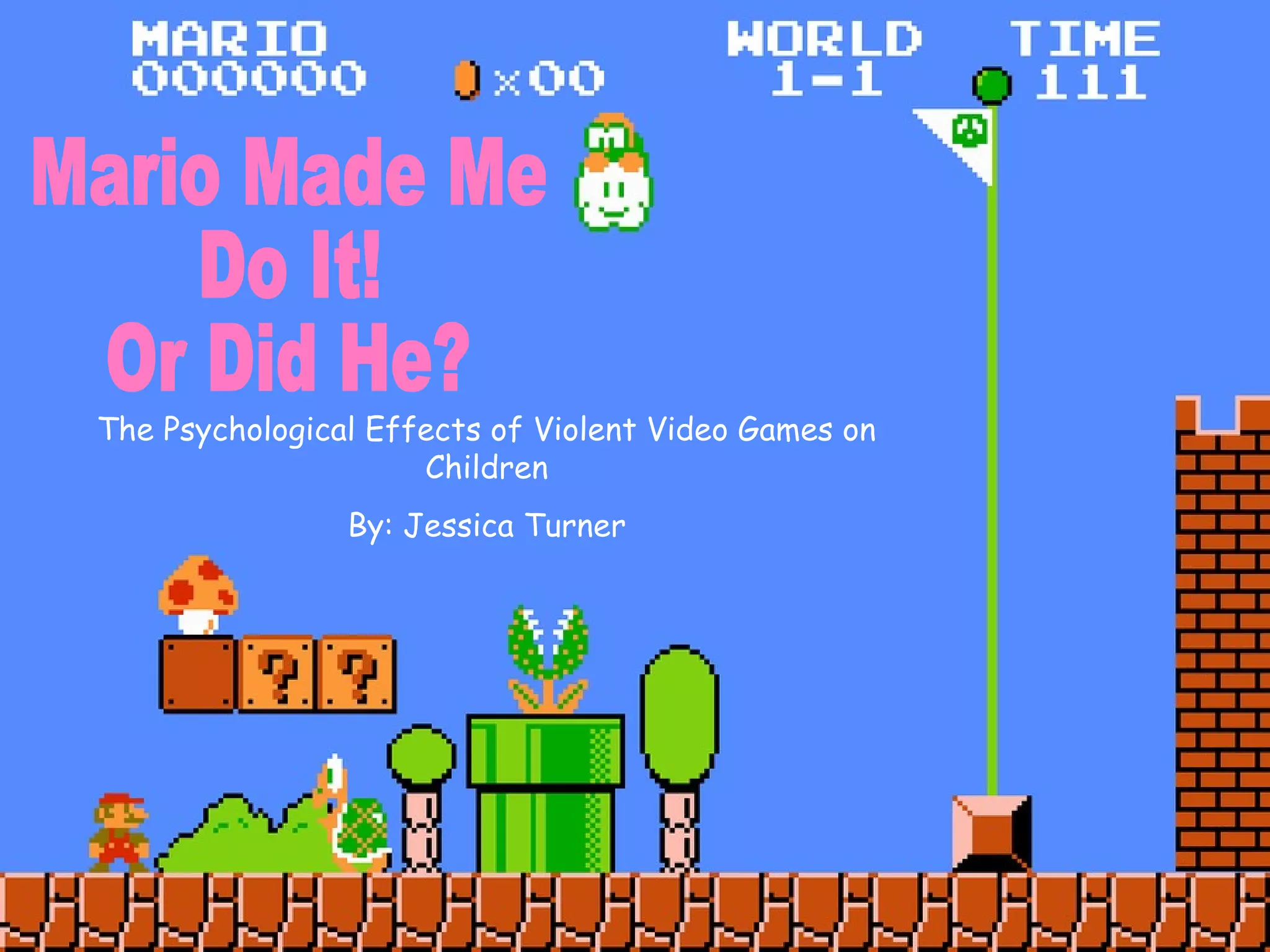

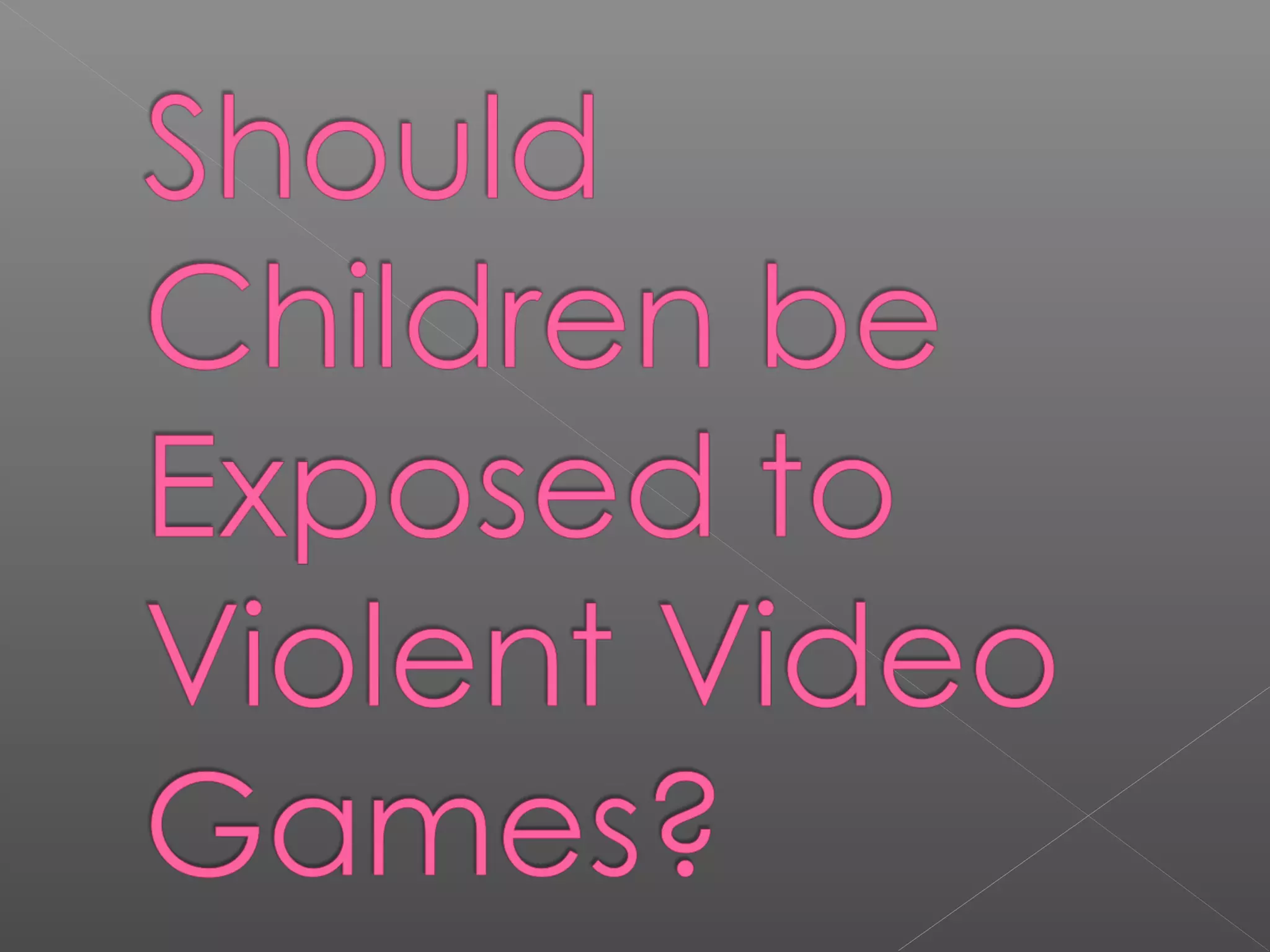
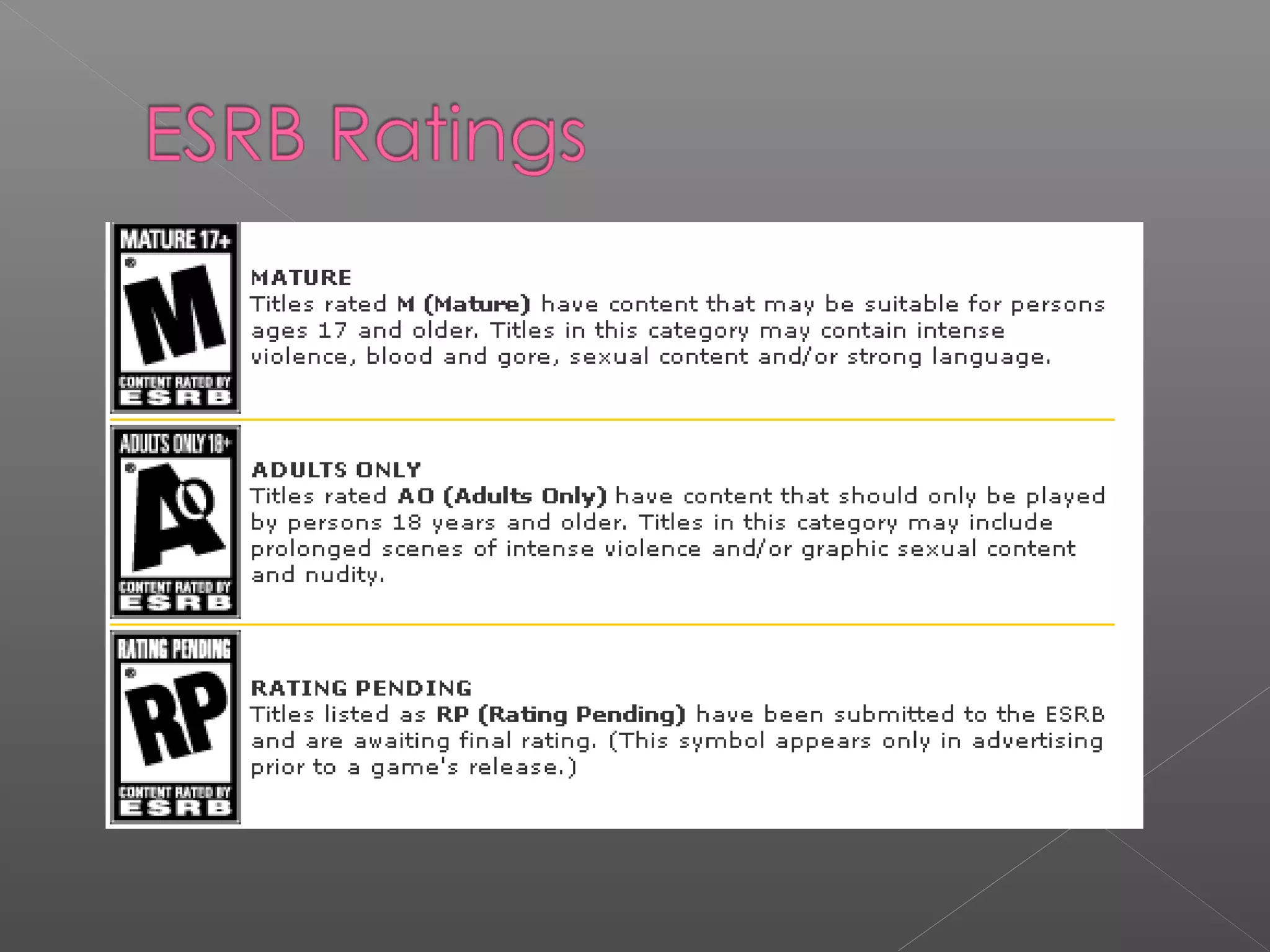
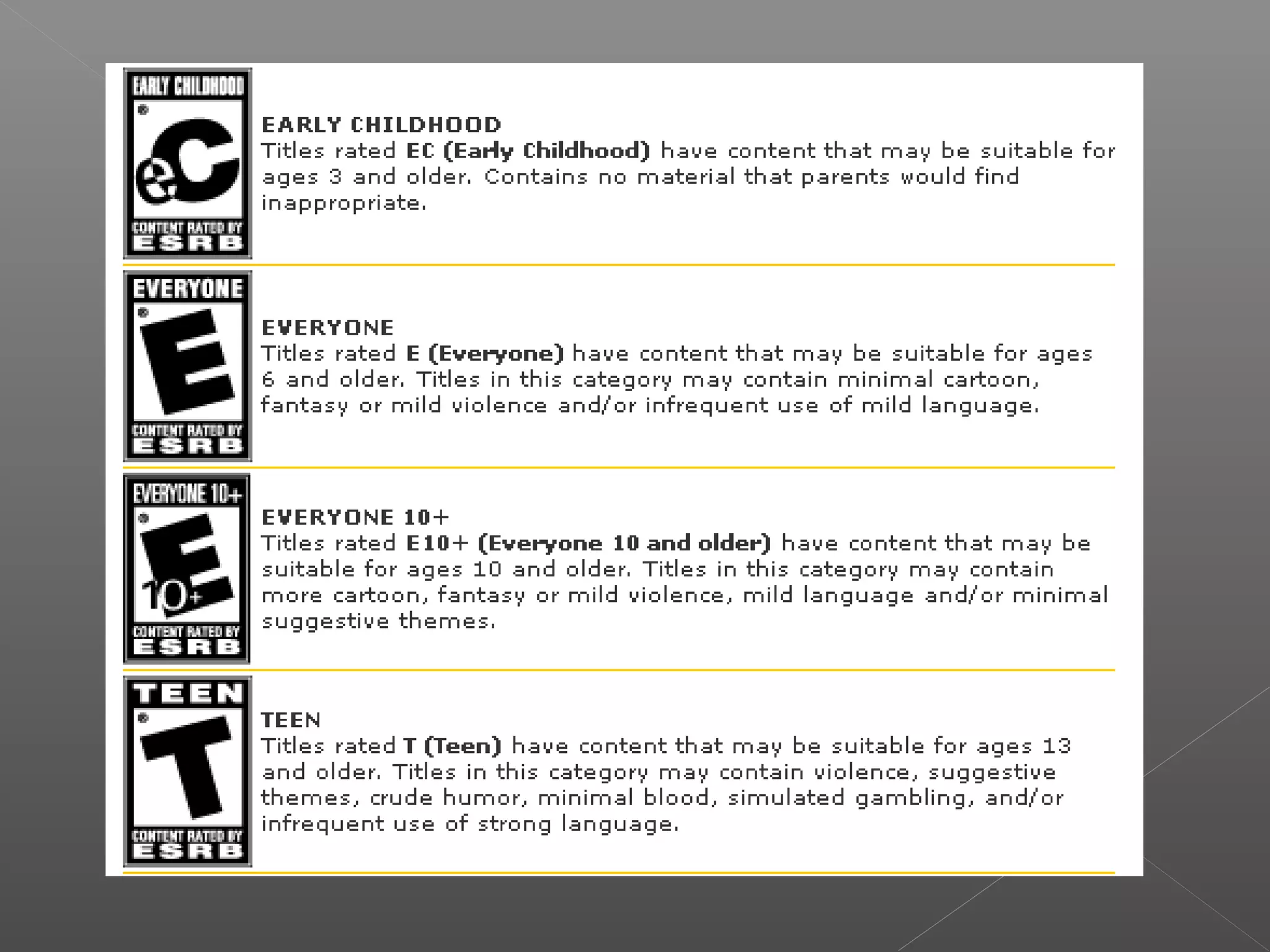


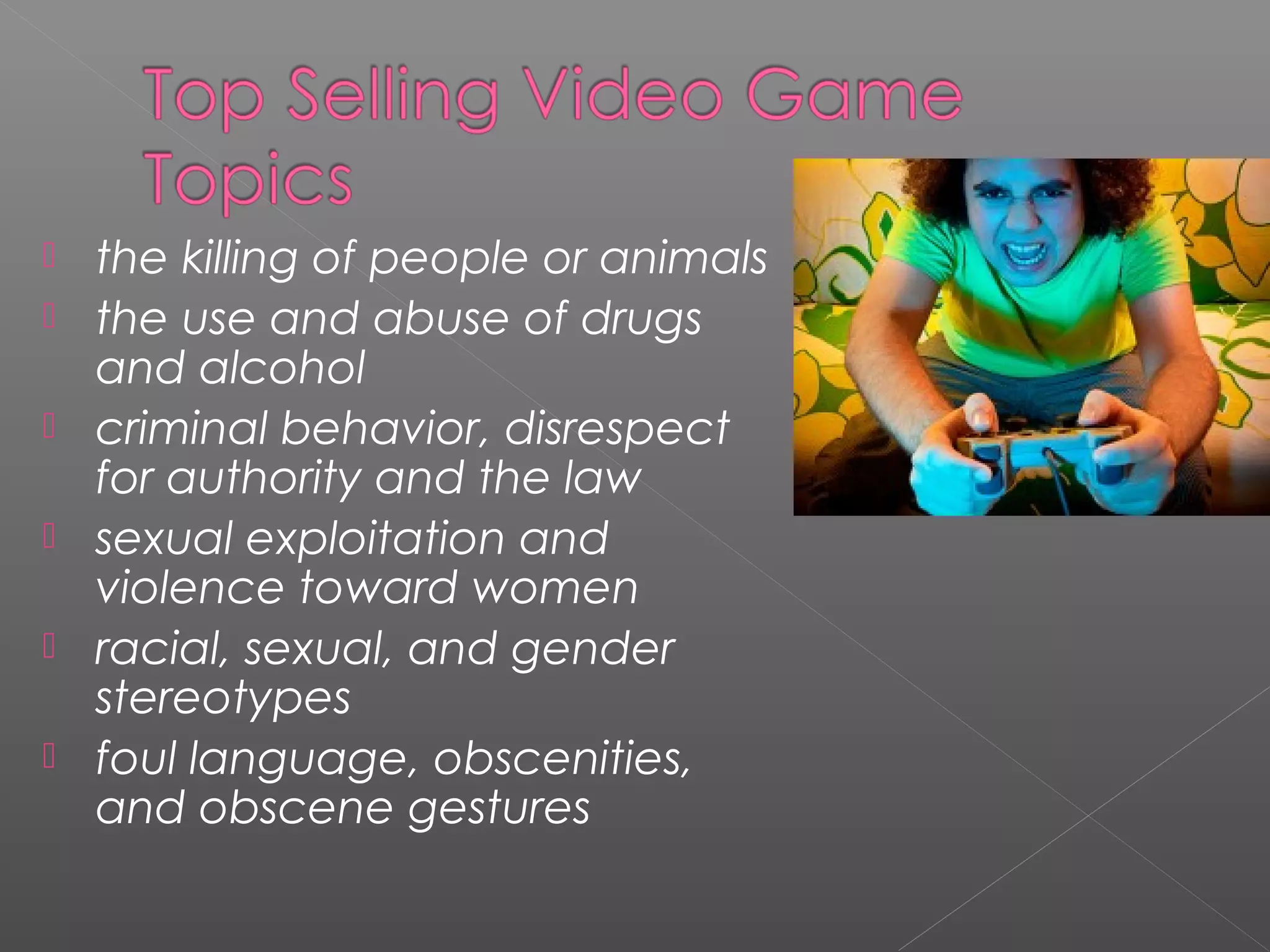

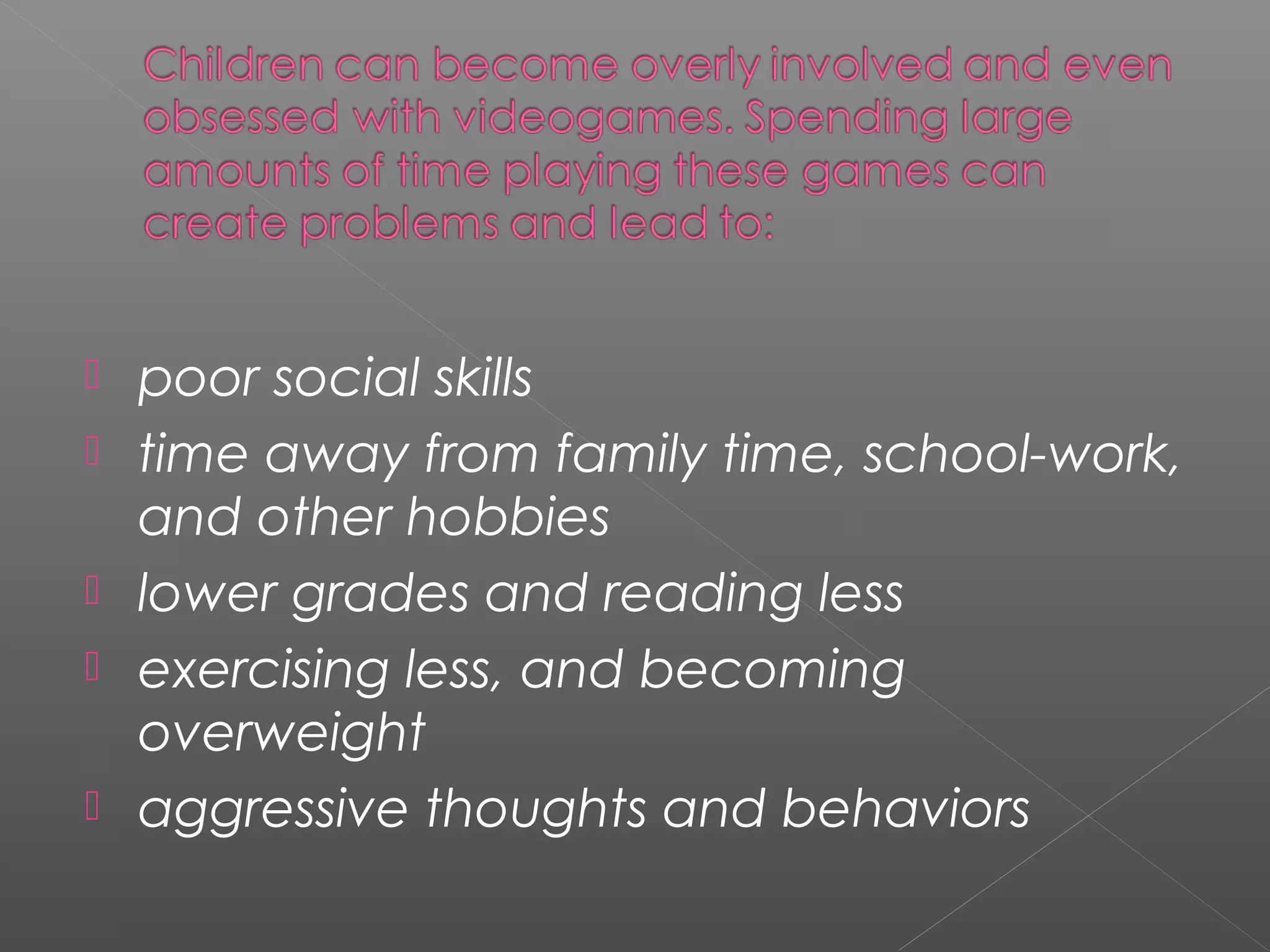
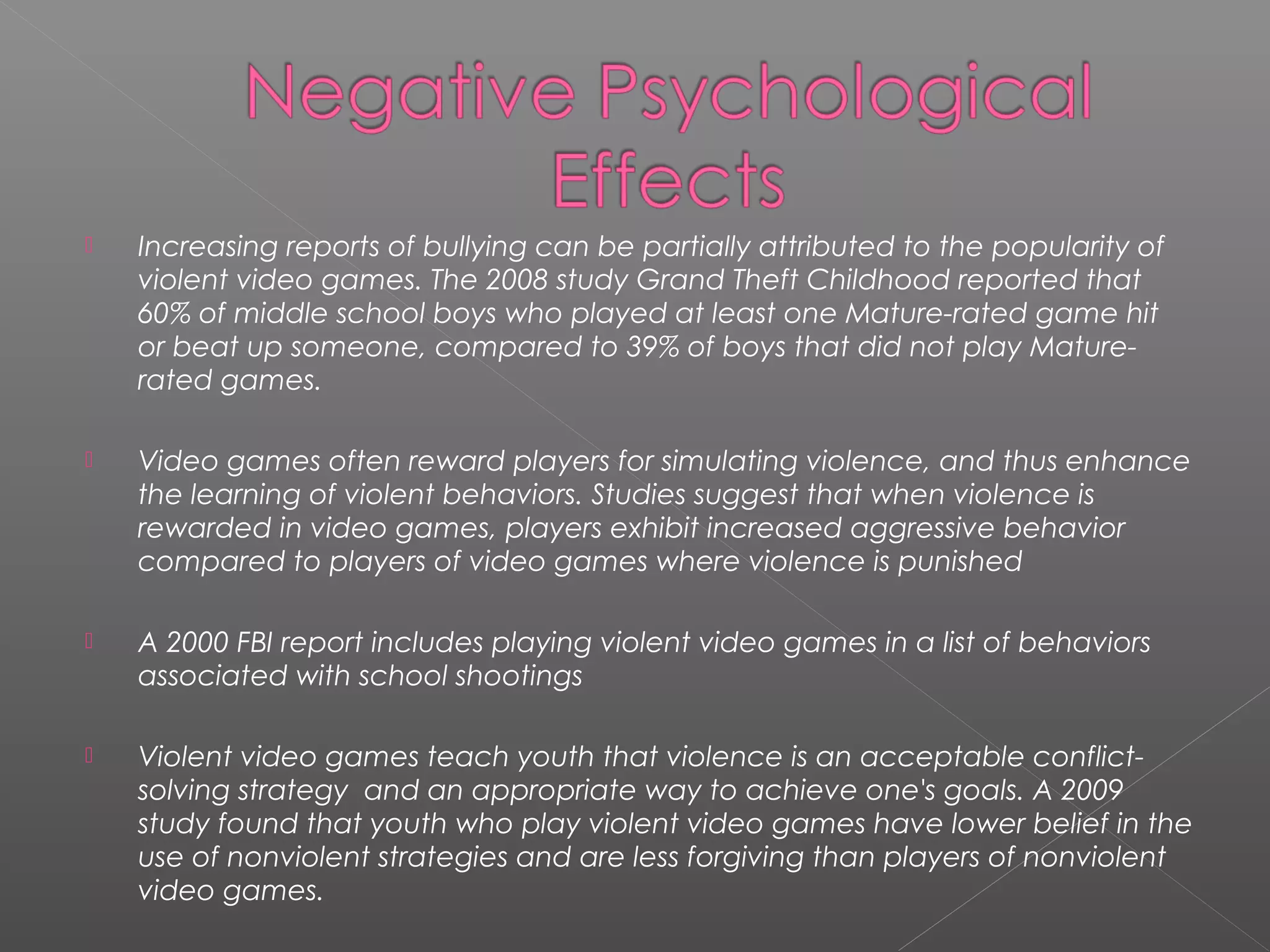
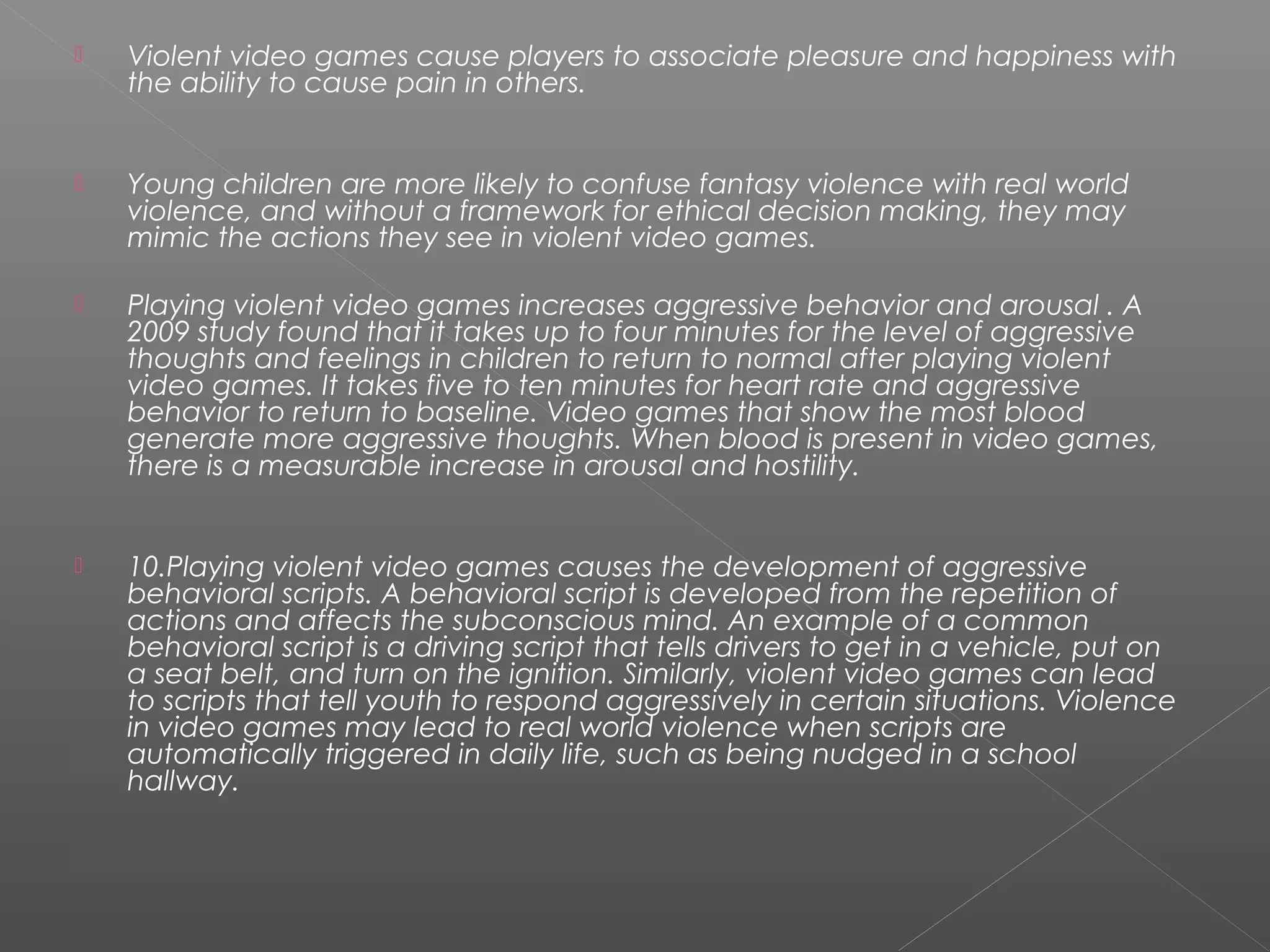





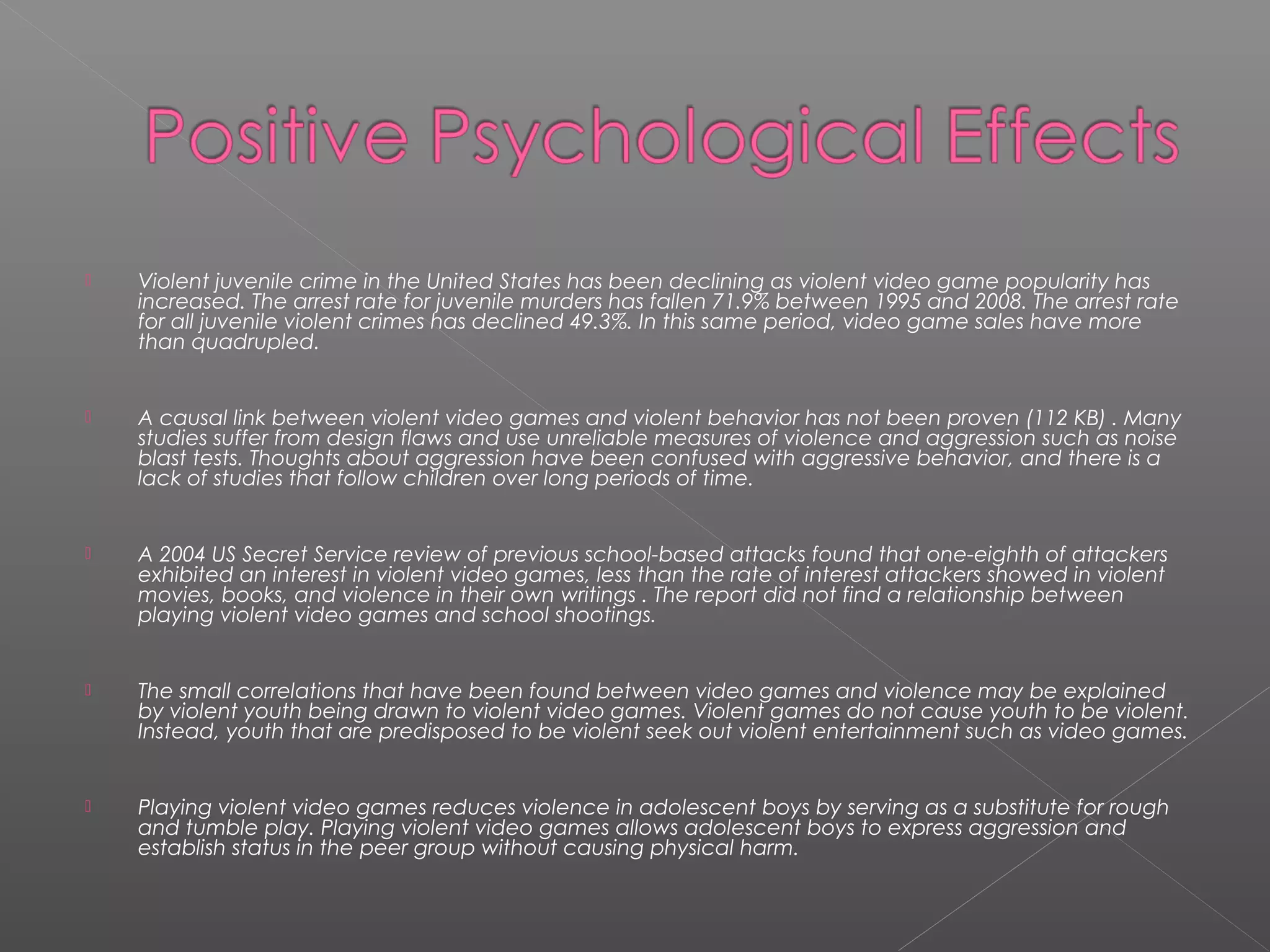
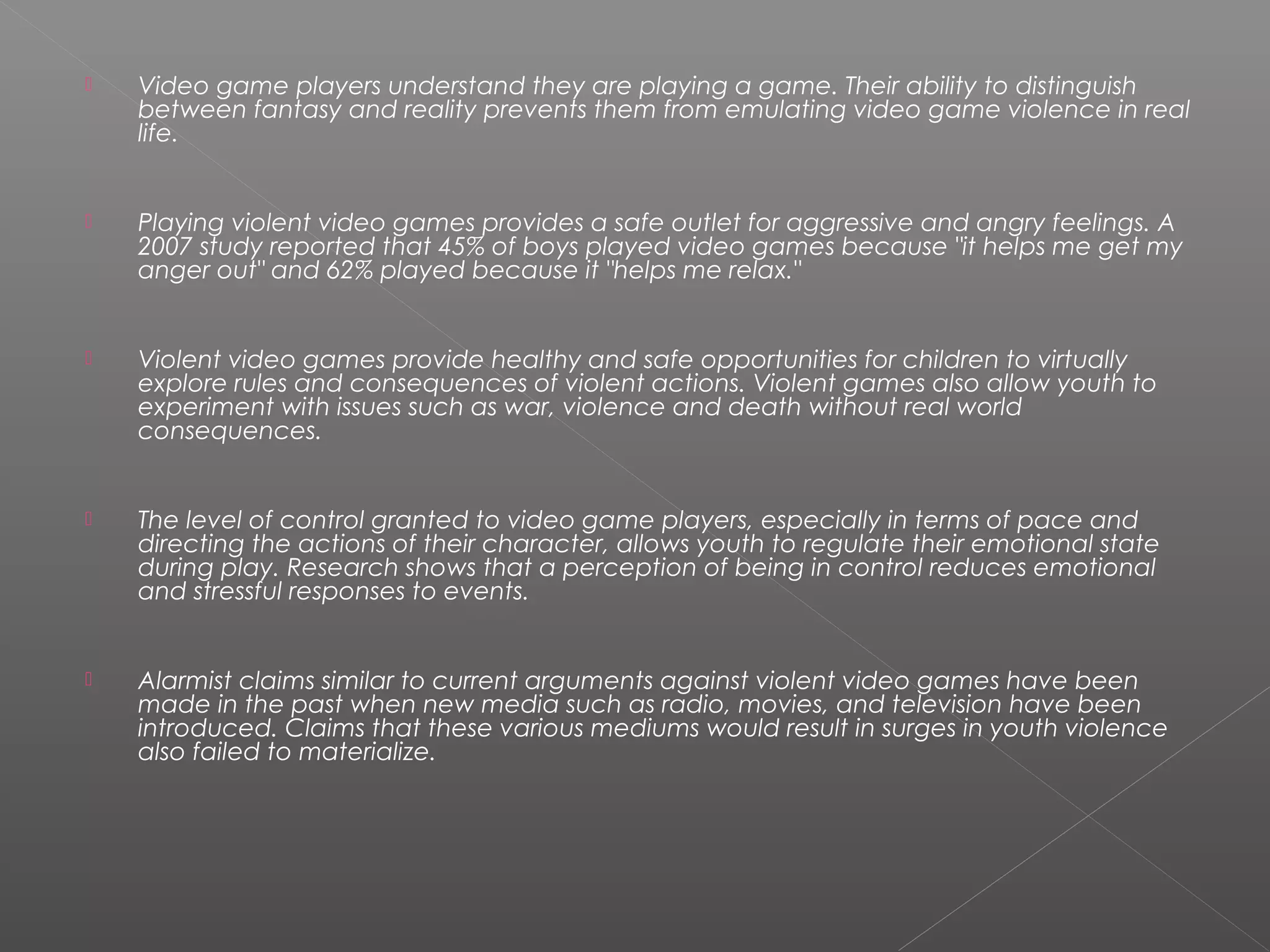
![ Violent video games may affect the form of violence (191 KB) , but does
not cause the violence to occur. Youth might model violent acts on
what they have seen in video games, but the violence would still occur
in the absence of video games.
Exposure to violent video games has not been shown to be predictive of
violent behavior or crime. Any link found between video games and
violence is best explained by other variables such as exposure to family
violence and aggressive personality. [10]
When research does show that violent video games cause more arousal
and aggression, it is because the comparative game is less exciting (286
KB) . A short-term increase in arousal and aggression does not mean a
child is going to leave his or her house and commit a violent act.
In 2005, the US had 2,279 murders committed by teenagers (27.9 per
million residents) compared to 73 in Japan (3.1 per million). Per capita
video game sales were $5.20 in the US compared to $47 in Japan. This
example illustrates that there is no correlation between violent behavior
and playing video games. [11] [12] [13]](https://image.slidesharecdn.com/presentation142867-121107100216-phpapp02/75/Presentation1-4-20-2048.jpg)


